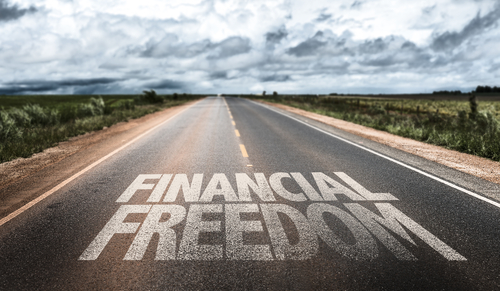You’re seriously thinking of making good use of the magic of bankruptcy and getting rid of your financial troubles. Chapter 13 is a great way to do so, as it offers plenty of opportunity for you to get back on your feet. However, instead of searching through San Diego, CA for an experienced Chapter 13 bankruptcy attorney, why not do your own research and familiarize yourself with the process of Chapter 13? If you’re unsure where to start, we’re here to help you!
What should I know about Chapter 13 before filing?
Virtually all types of bankruptcy available in the US are an excellent way to get a fresh start and resolve your struggles with debt and creditors. Chapter 13 is no exception. However, if you’re unfamiliar with what this bankruptcy entails, you might overlook it when considering your options – and that’s a mistake.
Likewise, you may have decided this is the right choice for your finances but you aren’t sure how to navigate through the process. Let’s see what you can expect from Chapter 13.
What it is
Quite simply, Chapter 13 allows you to catch up on debt and payments by restructuring your debt into a single, all-encompassing monthly installment. And that’s great – this saves you from all the need to worry about individual creditors and multiple payments across several accounts. .
This chapter is perfect if you have a steady income and important assets you want to keep, like your house and cars. Most importantly, this bankruptcy allows you to save your house from foreclosure, cars from repossession and stops wage garnishment and bank levies. All you have to do is create a sound repayment plan alongside your lawyer and keep making payments for three to five years. Not much to it when you are working with an attorney who knows the ropes!
If you’re eligible
Unfortunately, you can’t just file Chapter 13 and expect everything else to transpire automatically. Well, you can if you hire great lawyers. Still, you should check your eligibility before diving into any debt consolidation program. There are three main requirements that qualify you for this type of bankruptcy, wait for it, legal talk coming up:
- You have to be an individual filing bankruptcy, as Chapter 13 is not available for companies.
- You need to provide proof of steady income that allows you to meet your monthly installments as well as your household obligations. Many different types of income can be used to meet this qualification but it can be tricky.
- Your secured and unsecured debts can’t exceed certain amounds – $419,275 for unsecured, and $1,257,850 for secured debt. Not a fan of complicated math? We are and we know how to calculate these figures for you.
What automatic stay means
You’re probably familiar with the term “automatic stay” as one of the biggest perks of Chapter 13. But, what is it? Is it an elusive concept you cannot hope to comprehend? It actually isn’t, and it’s quite simple to explain. Automatic stay is amazing – it immediately prevents creditors from collecting against you the moment you file bankruptcy under this chapter. “Creditors be gone” is what automatic stay actually is.
When it’s perfect to file Chapter 13
As amazing as it sounds, though, Chapter 13 might not be ideal for every financial predicament you find yourself in. There are three scenarios that are perfect for filing Chapter 13 and allowing its benefits to swoop in and rescue you:
- You’re in danger of losing your home or other important assets and you desperately need the automatic stay.
- You find yourself in a financial storm and want to find peace in the eye of it by filing bankruptcy.
- You’re looking for the best way to retain your property without having to worry about losing your assets.
What happens to your debt
There are three main types of debt Chapter 13 distinguishes and categorizes:
- Priority debt: This is the debt you will end up paying through a Chapter 13 financial reorganization plan, such as tax obligations and alimony and child support arrearages.
- Secured debt: This is the debt you should include in your repayment plan if you would like to keep your home, car, or other essential assets secured by a mortgage or lien.
- Unsecured debt: This is the debt you either won’t have to repay at all, or you’ll have to repay a certain portion based on your income and property valuations.
Figuring out your plan
One of the unique things about filing a Chapter 13 is the actual “plan” that lays out the roadmap for you, your creditors and the Court. You need to incorporate all of your debt and what you are going to do with it.
For example, keeping your house means you have to plan for your future mortgage payments and if you are behind with your payments, dealing with paying the past due amount. The truth is, it is tricky dealing with all of these debts. A good starting point is to review through the Chapter 13 plan and work your way through it.
Who is San Diego’s most trusted Chapter 13 bankruptcy attorney?

This type of bankruptcy is more complicated than Chapter 7 and you need to be well-prepared to avoid missteps along the way. Spoiler warning – hire an experienced bankruptcy attorney to help you out.
Bankruptcy Law Offices of Mark L. Miller is here to make your bankruptcy process smooth sailing. We’re knowledgeable, experienced, and comfortable to be around. Most importantly, we’ll help you reach financial freedom without any hassle. With us, you’ll be able to enjoy Balboa Park again without a single worry on your mind. All you have to do is reach out to us and come in for a free consultation. Leave everything else to our expert lawyers.




